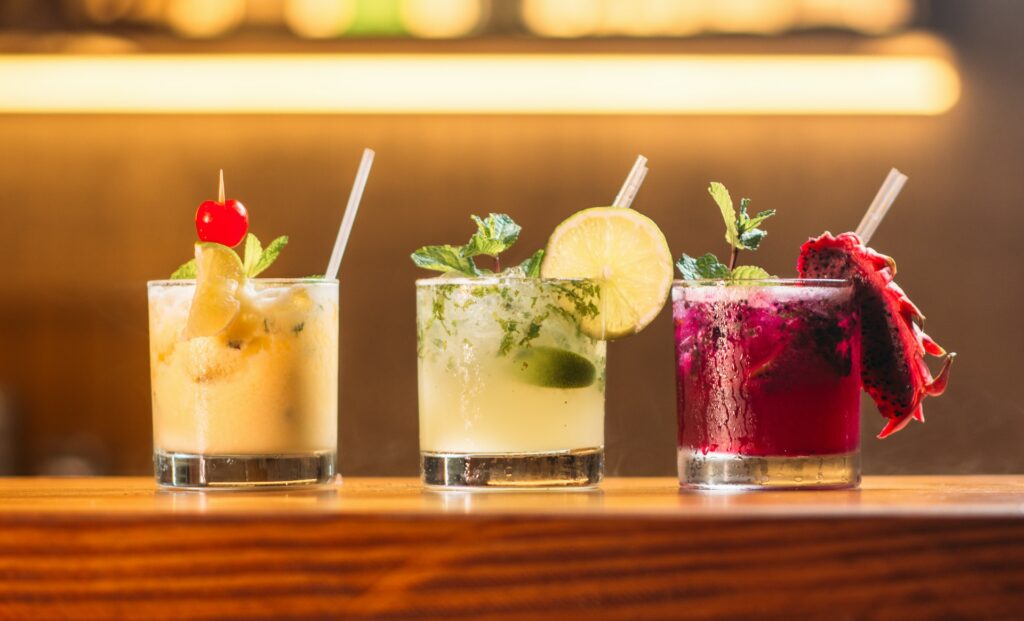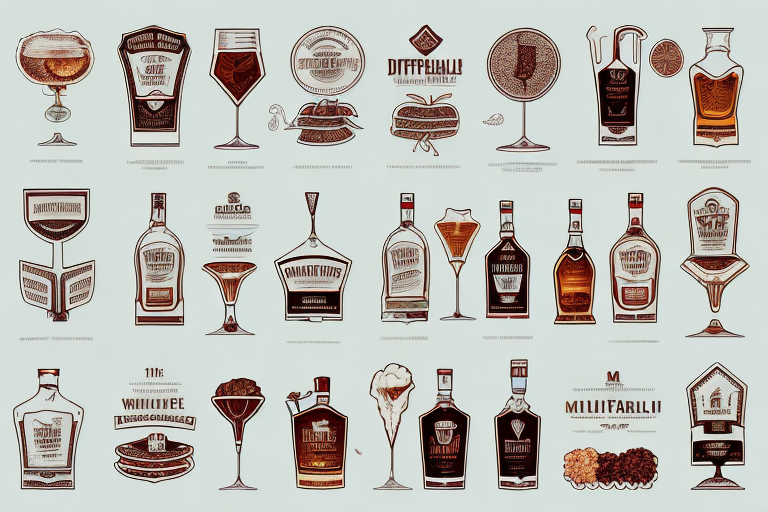
Whiskey is a beloved spirit that has a long and storied history. Whether you prefer a smoky Scotch, a rich bourbon, or a smooth Irish whiskey, there’s no denying the allure of this classic drink. However, when it comes to enjoying whiskey, there are some things you should never mix with it. In this article, we’ll explore the dos and don’ts of whiskey mixing, so you can make the most out of your favorite drink.
Understanding Whiskey: A Brief Overview
Before we delve into the world of whiskey mixing, let’s take a moment to understand the essence of this fine spirit. Whiskey originated centuries ago and has since become a staple in bars and homes all over the globe. The process of making whiskey involves fermenting and distilling grains, such as barley, corn, rye, or wheat. The aging process in wooden barrels gives whiskey its distinct flavor and character. Now that we have a basic understanding of whiskey, let’s explore its origin, different types, and the art of drinking it.
The Origin of Whiskey
Whiskey has a rich history that dates back hundreds of years. Its exact origins are still debated among historians, but most agree that it originated in either Ireland or Scotland. The art of distilling spirits spread throughout Europe, and whiskey soon became a popular drink. The Irish and Scottish have their unique approaches to whiskey production, resulting in distinct flavors and traditions.
In Ireland, whiskey is typically triple-distilled, resulting in a smooth and light-bodied spirit. Irish whiskey is known for its notes of honey, vanilla, and fruitiness. On the other hand, Scottish whiskey, also known as Scotch, is often double-distilled and aged in oak barrels. Scotch whiskey is characterized by its smoky, peaty, and complex flavors. Over time, whiskey production techniques spread to other countries, each adding their twist to the process. Today, both Irish whiskey and Scotch whiskey are renowned for their unique flavors and traditions.
Different Types of Whiskey
Whiskey comes in various styles, each with its own distinct taste and production methods.
- Scottish Scotch, as mentioned earlier, is known for its smoky and peaty flavor profile. It is often enjoyed neat or on the rocks, allowing the complex flavors to shine through. Irish whiskey, with its smoother and lighter character, is often enjoyed straight or in cocktails such as the classic Irish coffee.
- Canadian whiskey is commonly enjoyed in mixed drinks such as the famous Whiskey Sour or as a base for cocktails like the classic Canadian Caesar.
Now that we have a grasp of whiskey’s background and the different types available, it’s time to explore the art of drinking it. From selecting the right glassware to understanding the nuances of nosing and tasting, there is much to learn and appreciate about the world of whiskey. Whether you’re a seasoned whiskey enthusiast or just starting to explore this fascinating spirit, there is always something new to discover and enjoy.
The Art of Drinking Whiskey
Tasting whiskey is an experience that engages all of your senses. From the aroma to the taste, each sip should be savored and appreciated. To truly enjoy whiskey, it’s important to know how to taste it properly and avoid common mistakes that can detract from the experience.
- Whiskey, often referred to as the “water of life,” has a rich history that dates back centuries. Its origins can be traced to ancient civilizations, where it was used for medicinal purposes and eventually evolved into a beloved spirit. Today, whiskey is celebrated for its complex flavors and the craftsmanship that goes into its production.
- When it comes to tasting whiskey, there is an art to it. It’s not simply about taking a sip and moving on. It’s about taking the time to appreciate the nuances and complexities that each bottle has to offer.
The Right Way to Taste Whiskey
When tasting whiskey, take a moment to savor its aroma by gently swirling the liquid in your glass. Observe the color and clarity before taking a small sip. Let the whiskey coat your palate and release its flavors. Pay attention to the different notes, such as smokiness, fruitiness, or spiciness. As you swallow, note the finish and the lingering taste on your tongue.
To fully appreciate the flavors of whiskey, it’s important to understand the influence of different factors, such as the type of grain used, the aging process, and the region in which it was produced.
As you explore the world of whiskey, you’ll discover that there are various types and styles to choose from. From Scotch to Bourbon, each has its own distinct qualities that make it special.
Common Whiskey Drinking Mistakes
While there are many ways to enjoy whiskey, there are also some common mistakes that can diminish its flavors. One of the most prevalent mistakes is diluting it with the wrong mixers. Mixing whiskey with the wrong ingredients can overwhelm its delicate taste and alter the balance of flavors that make it so enjoyable.
- Another mistake to avoid is drinking whiskey too quickly. Whiskey is meant to be savored and enjoyed at a leisurely pace. Rushing through a glass of whiskey not only deprives you of fully experiencing its flavors, but it also diminishes the overall enjoyment of the drink.
- Furthermore, using the wrong glassware can also impact your whiskey-drinking experience. The shape and size of the glass can affect the way the whiskey is perceived, as it can enhance or diminish certain aromas and flavors. Investing in a proper whiskey glass, such as a Glencairn or a tulip-shaped glass, can greatly enhance your tasting experience.
- Lastly, it’s important to remember that whiskey is a personal preference. While there are guidelines on how to taste and enjoy whiskey, ultimately, it’s about what you enjoy. Experiment with different styles, brands, and expressions to find the ones that resonate with your taste buds.
So, the next time you pour yourself a glass of whiskey, take a moment to appreciate the artistry that goes into each bottle. From the carefully selected grains to the meticulous aging process, every drop of whiskey is a testament to the craft and dedication of its makers. Cheers to the art of drinking whiskey!
Popular Whiskey Mixers and Why They Work
When it comes to mixing whiskey, certain combinations work harmoniously to enhance the drink without overpowering it. Let’s explore two popular mixers that pair well with whiskey.
Water and Whiskey: A Classic Pair
Adding a few drops of water to your whiskey can unlock its flavors and help mellow any harshness. The water dilutes the alcohol slightly, which allows the whiskey’s other flavors to shine. It can also soften the burn and make it more approachable for those new to whiskey.
Whiskey and Soda: A Fizzy Combination
Soda water, such as club soda or tonic water, can be a refreshing addition to whiskey. The carbonation adds a pleasant fizz and can bring out the flavors in a different way. This mixer is particularly popular in cocktails like the classic Whiskey Soda Highball.
What Not to Mix with Whiskey: The Don’ts
While there are mixers that work well with whiskey, there are also some combinations you should avoid. These mixers can overpower the delicate flavors of the whiskey or create an unpleasant taste that detracts from the experience. Let’s explore some of the “don’ts” when it comes to mixing whiskey.
Avoiding Certain Citrus Fruits
While citrus fruits can be delicious on their own or in cocktails, they don’t always play well with whiskey. The acidity in citrus fruits can clash with the flavors of the whiskey, creating an unbalanced taste. It’s best to enjoy citrus separately and let the whiskey shine on its own.
The Problem with Mixing Whiskey and Beer
Beer and whiskey are both beloved beverages, but they don’t always mix well together. Mixing whiskey with beer can lead to an overwhelming and confusing taste. The flavors and carbonation of the beer can overpower the whiskey, resulting in a less enjoyable drinking experience.
Why Dairy Products and Whiskey Don’t Mix
While whiskey and cream might seem like a tempting combination, it’s best to keep dairy products separate from your whiskey. The fats in dairy can coat your palate and interfere with the flavors of the whiskey. It’s best to savor them separately and avoid mixing them together.
The Impact of Wrong Mixers on Whiskey’s Flavor
Using the wrong mixers can have a detrimental effect on the taste of your whiskey. The delicate balance of flavors that make whiskey so enjoyable can be thrown off, resulting in a less satisfying drinking experience.
How Wrong Mixers Can Ruin the Taste
When the wrong mixers are used, they can overpower the subtle flavors of the whiskey. Instead of complementing the whiskey, they compete with it, masking the unique characteristics that make each type of whiskey special. It’s important to choose mixers that enhance the whiskey’s flavors rather than overpowering them.
Health Implications of Wrong Whiskey Mixers
Using wrong mixers not only affects the taste of your whiskey but can also have health implications. Certain mixers, such as sugary sodas or energy drinks, can add unnecessary calories and increase the risk of health issues. It’s essential to be mindful of what you mix with your whiskey to maintain a balanced and enjoyable drinking experience.
To wrap up
In conclusion, when it comes to mixing whiskey, it’s important to choose the right mixers to enhance and elevate its flavors. While water and soda are popular choices that compliment whiskey, it’s crucial to steer clear of citrus fruits, beer, and dairy products. By understanding the do’s and don’ts of whiskey mixing, you can fully appreciate the complex flavors and enjoy this timeless spirit to its fullest. Cheers to savoring whiskey in all its glory while respecting its heritage and traditions.
